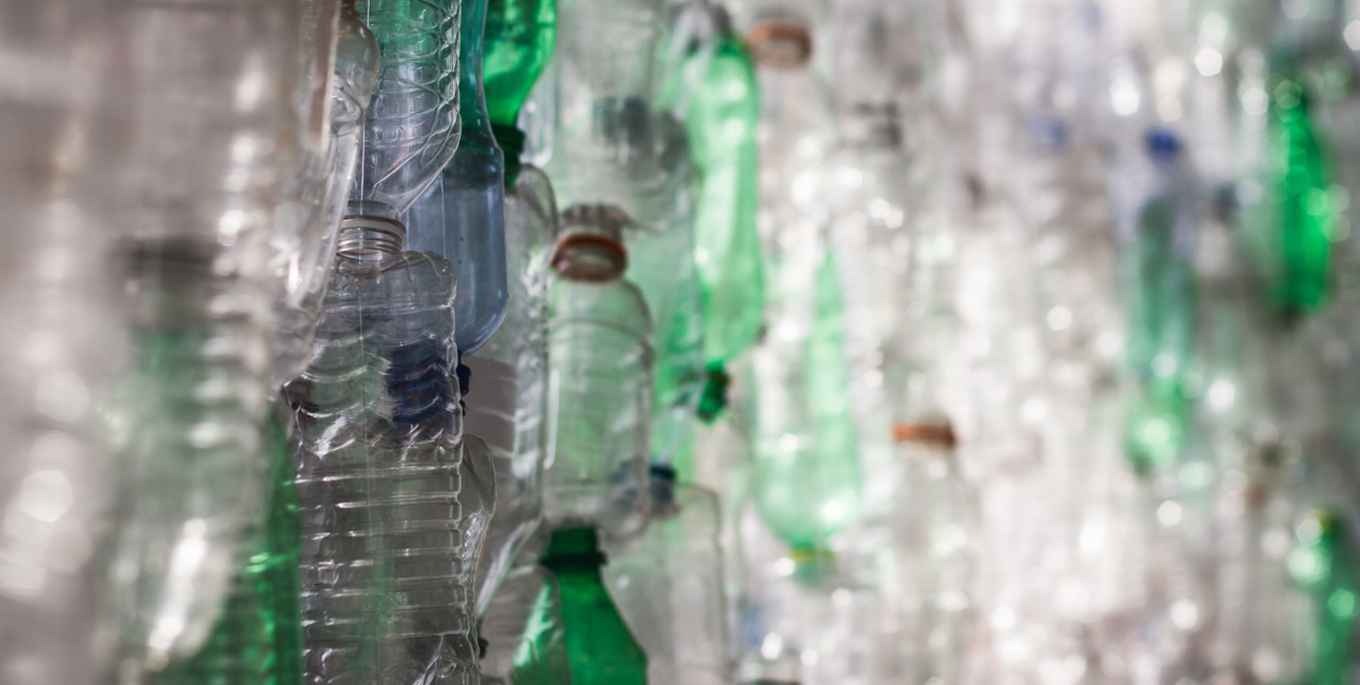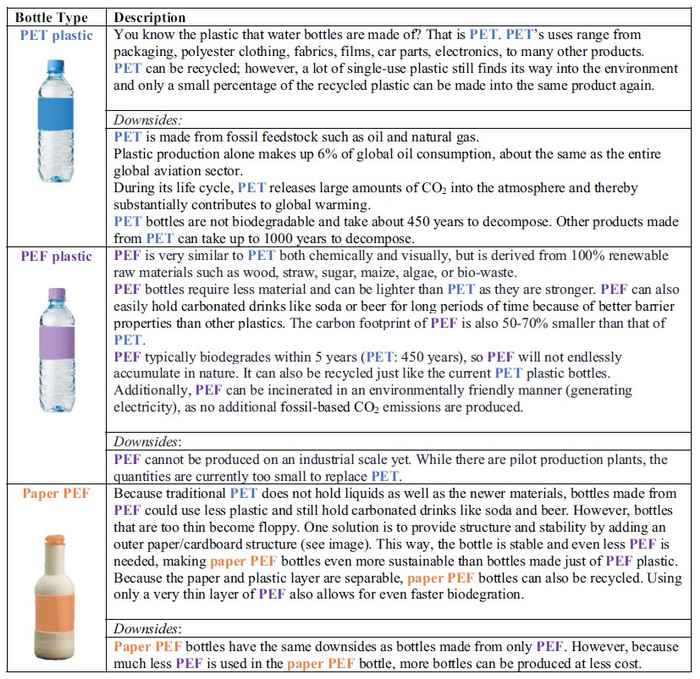Consumers favour bio-based alternatives over traditional fossil-based plastic bottles
31 January 2023

“Consumers’ use of these alternatives is determined not only by technical product and brand characteristics, but also by psychological factors”, says Zwicker, “which, for instance, include feelings evoked by a product, or a perceived social norm in relation to buying and using the product.” When it comes to bio-based products, there’s only limited literature on such factors, she says. On the one hand, consumers seem to be positive about bio-based plastics and willing to pay more for it, on the other hand, mixed or negative feelings have also been reported and consumers have misconceptions about these materials. These might be due to a lack of knowledge or a cynical attitude towards the plastics industry.
A clear preference for bio-based
In her research, Zwicker investigated preferences for three types of plastic bottles: a conventional fossil-based bottle (PET plastic), a visually identical bio-based bottle (PEF plastic), and a visually distinct bio-based bottle with a paper outer layer (paper PEF). It showed that people clearly preferred the bio-based bottles over the conventional one. The strongest preference was for the bottle that was recognisable as bio-based. The test subjects were willing to pay up to 40 % more for the bio-based bottles.
Because of the COVID-19 pandemic, it was not feasible to conduct a field or laboratory study to let participants handle the actual bottles. Zwicker held an online survey among 529 respondents instead, creating a realistic and immersive purchase choice situation, as is common in psychological research on decision-making. “The results are therefore more a reflection of attitudes and intentions rather than actual behaviour”, she says. “But the high willingness of the consumers to pay a bonus for bio-based product clearly indicates that there is a demand for these alternatives.” Zwicker also investigated the extent to which an individual choice is influenced by other people witnessing the choice. There was, however, no clear relation, so a social norm did not seem as relevant in this study. The findings thus signal to companies that there is a consumer demand for sustainable products, and that there might be a commercial upside to providing more sustainable bio-based plastic products.
A more meaningful choice
To Prof. Van Harreveld it is striking that the preference for a bio-based alternative is even stronger when the product is visually distinct. “It suggests that when a sustainable choice is literally more tangible, it is psychologically closer to people and feels more meaningful.” Prof. Gruter finds the results very valuable as they provide insight into the future market for sustainable plastics. “The plastics transition is not just a technological transition. Better understanding the buying drivers of consumers are extremely important, especially in early phase when the sustainable alternatives are still relatively expensive.”

Paper details
Maria V. Zwicker, Cameron Brick, Gert-Jan M. Gruter, Frenk van Harreveld: Consumer attitudes and willingness to pay for novel bio-based products using hypothetical bottle choice. Sustainable Production and Consumption 35 (2023) 173–183. DOI: 10.1016/j.spc.2022.10.021
See also
- Research group Industrial Sustainable Chemistry
- Research group Social Psychology